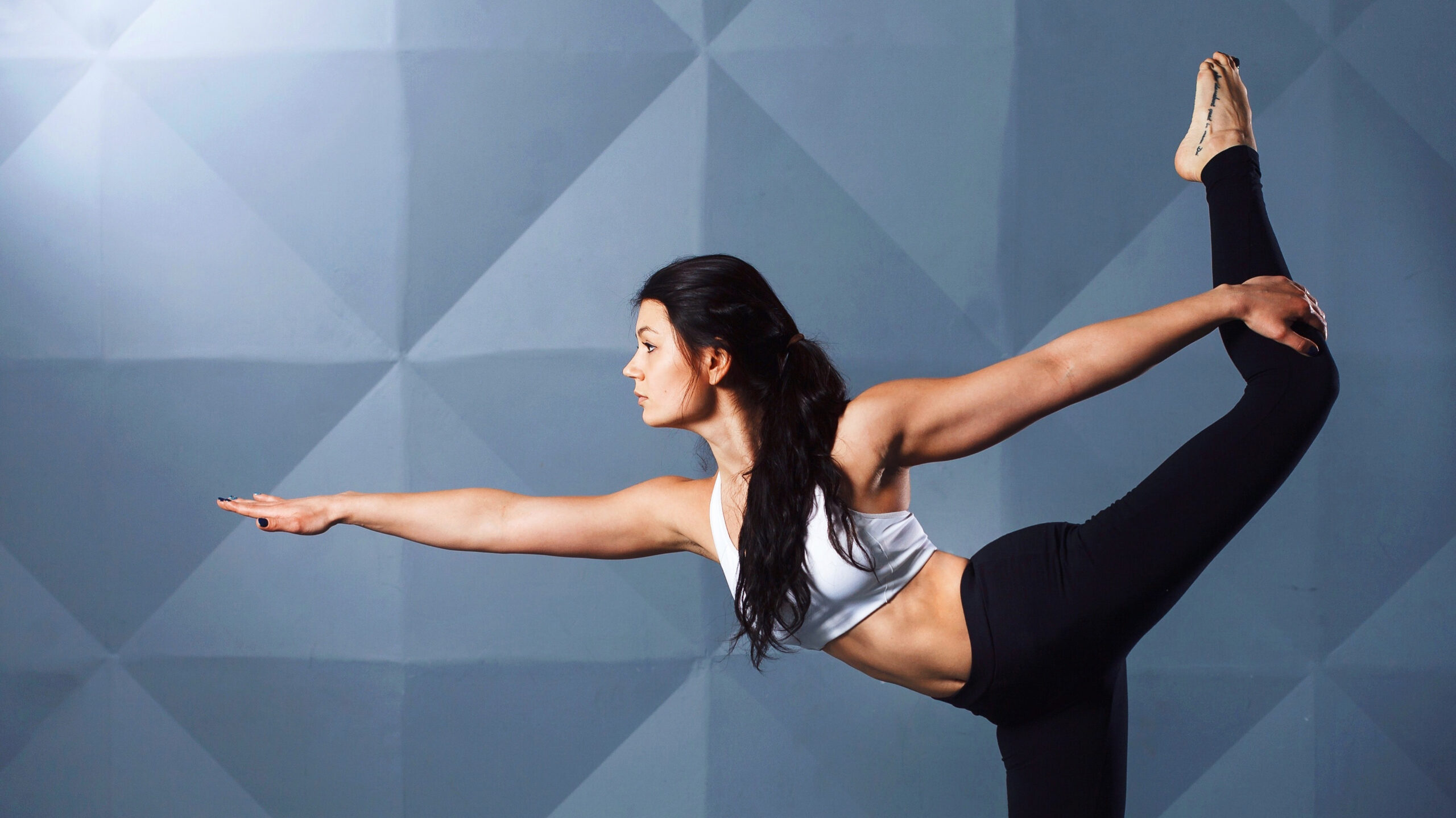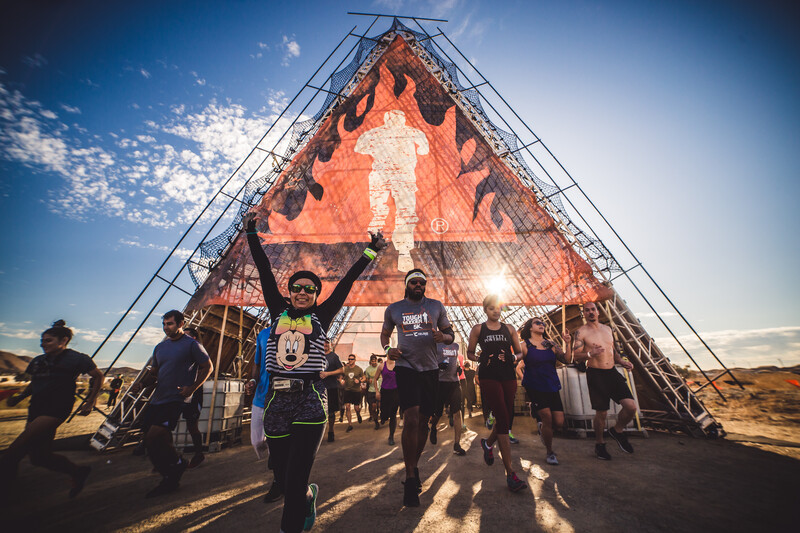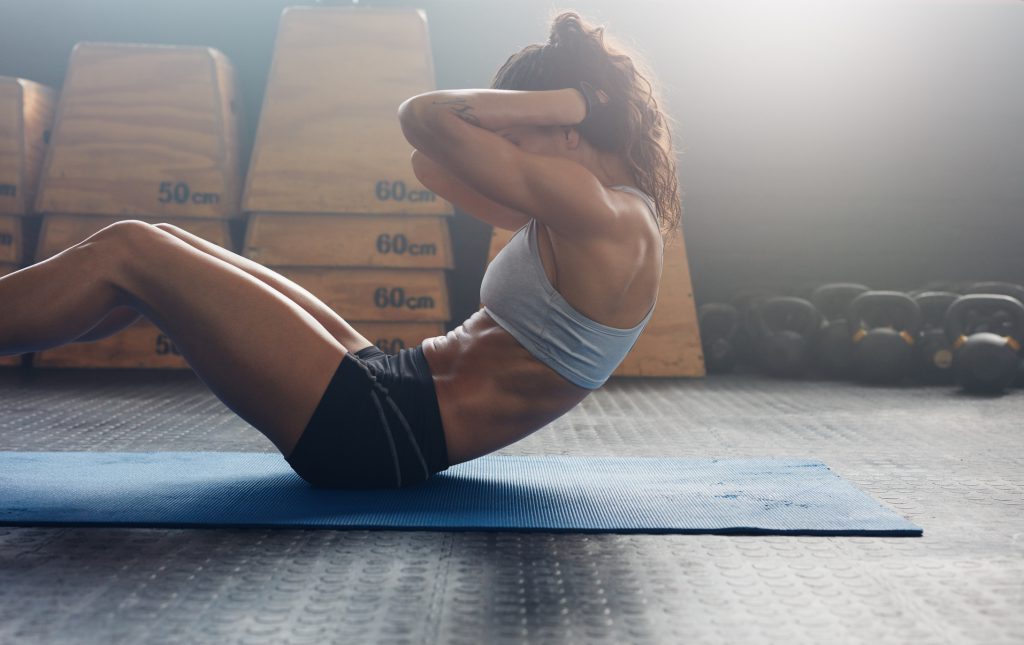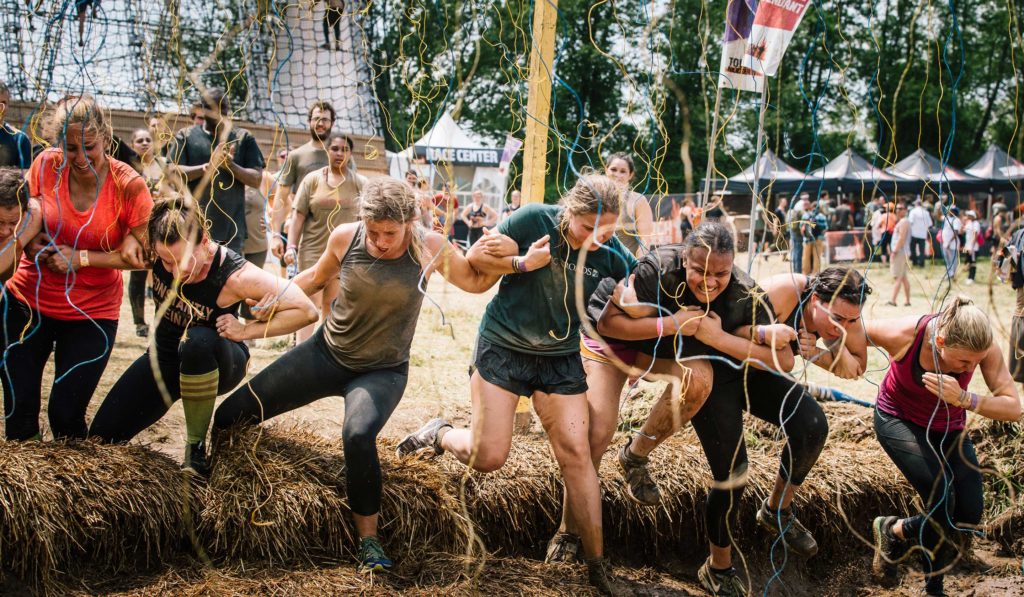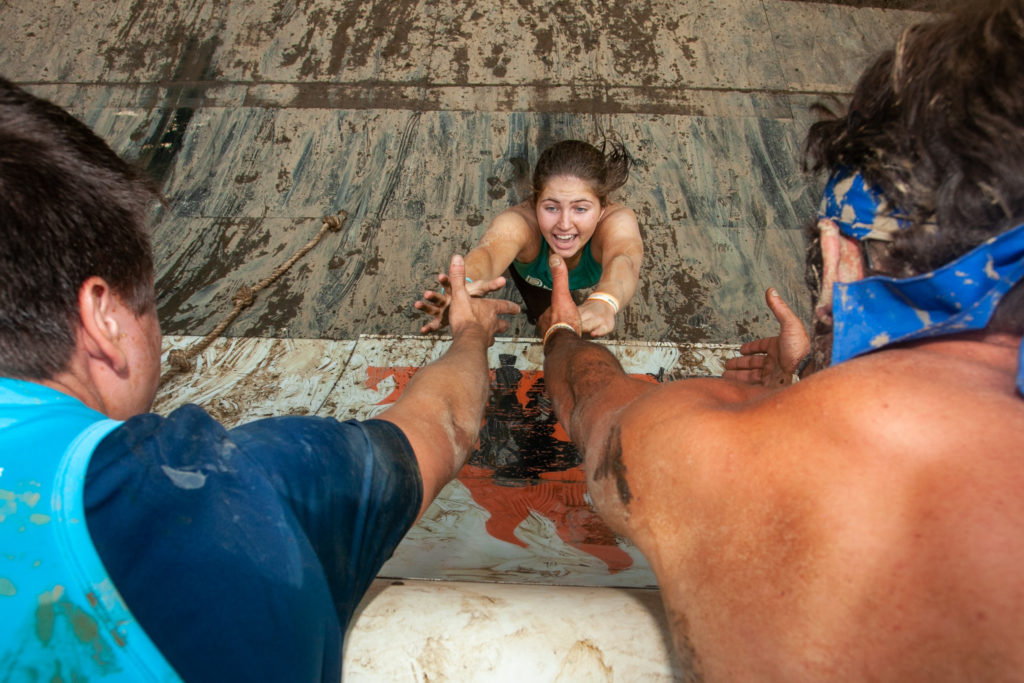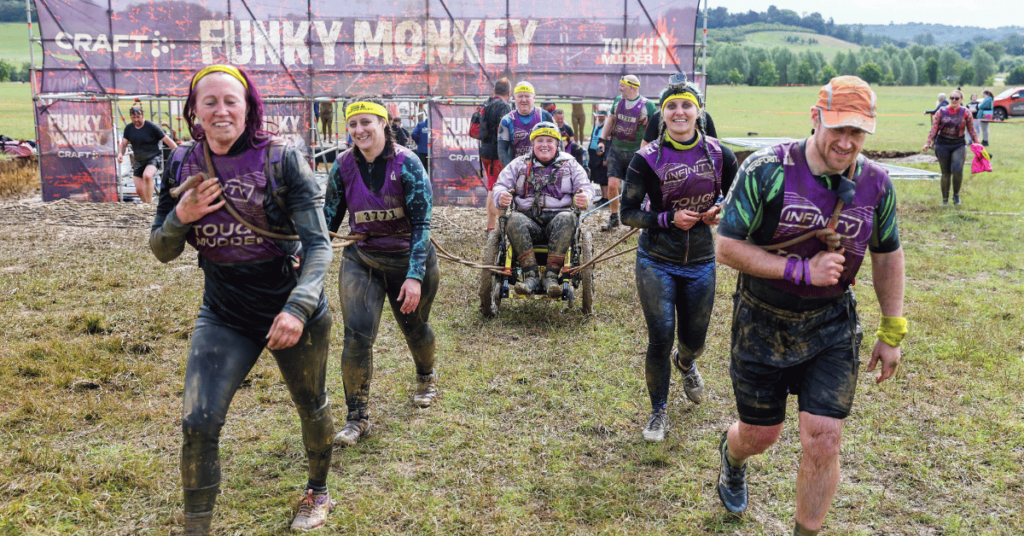Football players practice with ballet, so is it all that surprising that barre moves could benefit your Tough Mudder training? The balance, flexibility, grace, and muscular isolations achieved by dancer-esque alignment is invaluable to athletes, and could be just the thing to help you level up.
HOW TO USE BARRE MOVES IN YOUR TOUGH MUDDER TRAINING
Before we launch into ballet positions, heel heights, and balance challenges, what actually is barre fitness? Firstly, it’s pronounced like “bar.” Glad that’s out of the way.
Secondly, as you might have already guessed, barre is informed by ballet technique. Whereas there isn’t much choreography involved, the key similarity between barre and ballet is the positioning. In most barre moves, the knees are soft and tailbone is either slightly relaxed or tucked forward. This runs counter to how we’re used to standing in our day-to-day; typically, humans stand with locked knees and an arched or sway-back, so adjusting to this new type of skeletal alignment can feel a bit awkward at first.
But the benefits of this stance are innumerable; in barre posture, your knees and back are immediately protected, preventing injury. What’s more, your core is automatically engaged when your back is properly lengthened, meaning your abs never stop working. Which basically means it’s perfect for training for obstacles like Hero Walls (brought onto course by Macmillan) and The Block Ness Monster (courtesy of our pals at Lidl).
Barre conditioning encourages strength, balance, flexibility, and well-rounded athleticism. And by athleticism we mean badassery. Try these six simple moves, working until your muscles shake (and then add 10 —no make it 15 more reps).
1. Relevé Lifts
Obstacle: Hero Carry
Equipment needed: none (chair optional for modifications)
What you do:
- Bring your heels together and toes apart in first position.
- Lift your heels and lower, keeping your rib cage pulled in.
- Enjoy a full range of motion; lifting all the way up and all the way down is more challenging than keeping your heels at a hover.
OPTION: Hold onto the barre (or a chair) with one hand for balance.
PROGRESSION: Do the lifts in varying tempos, and incorporate holds at the top.
Why it works: Endurance races tax your heart rate most of all. These lifts, when executed at a high speed, get your heart going. To take it up a notch, lift your arms over head. (Think calf-raises, but with a little more grace.)
2. Second Position
Obstacle: Quagmire, Mud Mile 2.0
Equipment needed: none
What you do:
- Walk your feet wider than your hips and turn your toes slightly outward.
- Sink your seat low, (ideally with your knees, thighs, and hips all aligned on one line).
- Flatten out your back, tucking your pelvis forward to engage your core.
- Hands can be at your waist, in wide prayer, or overhead.
PROGRESSION: Increase the movement with heel lifts, thigh pulses and wrapping knees back.
Why it works: When jumping over mud pits, you’ll want the strongest quads possible. In our opinion, nothing is as tough on the quads as a perfect Second Position can be. Imagine that your back is flush against a wall as you lower and lift — don’t stick the booty out or you’ll risk tweaking out your lower back.
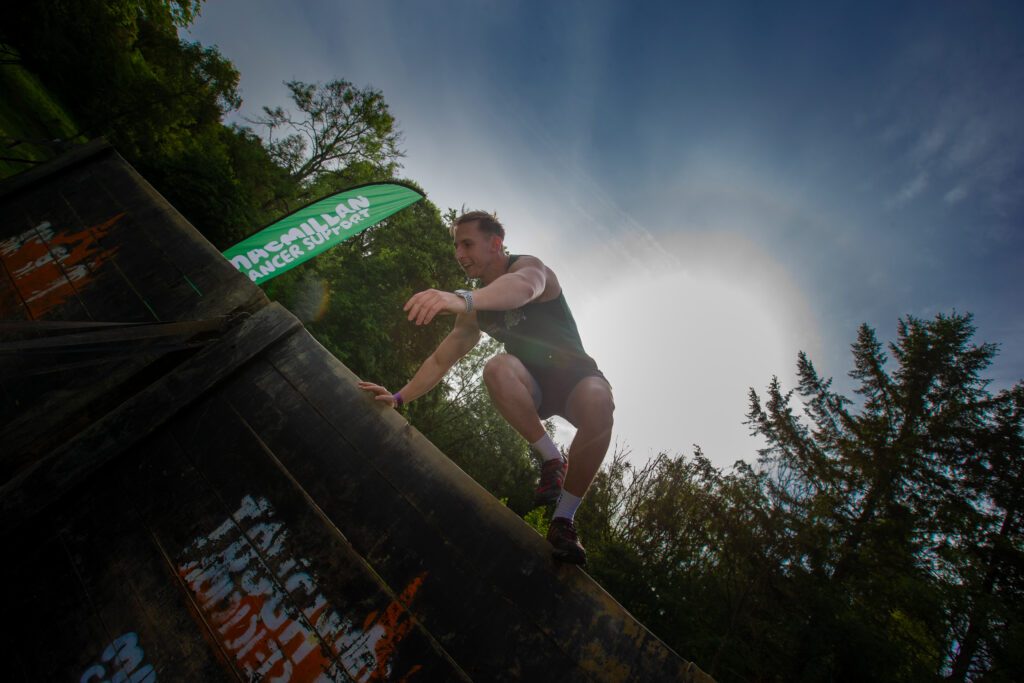
3. Chair
Obstacle: Hero Walls, Funky Monkey
Equipment needed: a barre
What you do:
- Walk your feet underneath the barre.
- Hold onto the barre with a shoulder-width grip.
- Extend your arms fully with no bend in the elbows.
- Keep your knees over your ankles and knees level with hips so that your legs form a 90-degree angle.
- Flatten your back, pressing your shoulder blades together.
PROGRESSION: Includes pulses up and down, heel lifts one at a time, and pelvic tucks forward and back.
Why it works: No doubt you’ll want to strengthen that killer grip before you take to the mud. This flat-backed chair position works your quads while requiring that you hang onto the barre for dear life. When you’re scaling Hero Walls, pulling teammates over barriers, and hanging from various balances, you’ll remember to thank us.
4. Water-ski
Obstacle: Everest
Equipment needed: a barre
What you do:
- Begin a half of an arm’s length from barre.
- Bring heels together and toes apart to a first position (wide-V stance).
- Lift your heels, glue the heels back together at the top.
- Extend your arms, sending the knees toward wall.
- Tuck your hips under so that, from shoulder to knee, your body’s in one, uninterrupted line.
PROGRESSION: Further movement options are pulses, pelvic tucks and wrap your knees back.
Why it works: Running through mud necessitates healthy joints — knees especially. Your vastus muscles need strengthening, and this water-ski position is here to help you out with that. Drive your knees toward the wall in front of you and keep your core engaged to feel an extra burn.
5. Plank on Pointe
Obstacle: Skidmarked
Equipment needed: none
What you do:
- Place your palms underneath shoulders and zip your legs together.
- Pull your belly button towards your spine with each breath.
PROGRESSION: Point one foot and pulse, alternating sides.
Why it works: A strong core yields better, overall body balance. Staying upright and pulling the belly into spine is key to make it to the other side of walls, and this Plank on Pointe will help you practice that ideal alignment.
6. Ballet Leg Lowers
Obstacle: Shawshanked, Kiss of Mud 2.0
Equipment needed: none
What you do:
- On your back, extend your legs to sky in a pike position.
- Bring your heels together, toes apart, and zip up the inner thighs like you have one, mermaid fin.
- Keep your back flat on the floor
OPTION: Place hands underneath seat to further disengage your hip flexors.
PROGRESSION: Flex the feet as you lower the legs, point as you lift; criss cross your ankles on the way up and down.
Why it works: Any time you’re army crawling, think of pressing your back flat and tucking the tailbone, knitting everything in for maximum ab engagement.
